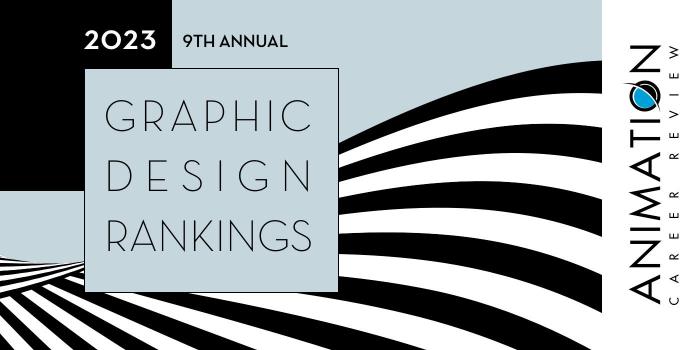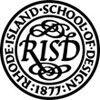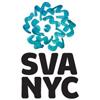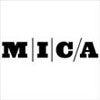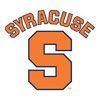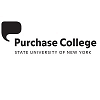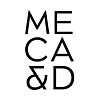Pratt Institute (Pratt) houses the School of Design, home to the Communications Design Program, which has both BFA and MFA pathways. Established in 2014, the School of Design also houses the Associate of Occupational Studies (AOS) in Graphic Design Program, the Graphic Design/Illustration AAS, and the STEM-designated Packaging, Identities and Systems Design MS Program.
For students seeking a shorter program, Pratt Institute offers a number of certificate programs in the School of Continuing Studies. Options for designers include Graphic Design, Digital Design, Branding & Digital Marketing, Digital Product Design, UX/UI Mobile Design, Human-Centered Design, and Motion Graphics.
The Communications Design BFA at Pratt Institute has three emphasis areas: Graphic Design, Advertising Art Direction, and Illustration. Course examples across areas include Image as Communication, Sketchbook Warehouse, Process and Production, Advertising, Emerging Practices, Typography, Illustration, Package Design, Special Topics: Publications, Freelancing & Business Illustration and Graphic Design, Typeface Design, and Sequential Art and Graphic Novel. Students in all emphasis areas may complete an internship at a field related professional site. Successful completion of the Senior Project is required to graduate.
The Graphic Design AOS and Graphic Design/Illustration AAS Programs are 66 credit hours each. The AOS is an intensive, career-track program with an all art and design curriculum. Designed for high school graduates and adults with or without a degree, the AOS includes capstone courses and internship opportunities. Course examples include Graphic Design I-II, Digital Design, Packaging Design I-II, Digital Media, Typography I-III, UI/UX Interactive Media I-II, and Advertising Design I-II. In just two years, AAS students will graduate with a professional portfolio of their best work, along with the skills needed to pursue immediate employment in graphic design, interactive media, advertising, package design, web design, illustration, game design, and publishing.
The AAS in Graphic Design/Illustration at Pratt Institute prepares students for transfer into the Fine Arts Department at Pratt Institute, the Communications Design BFA, or other school or related program of their choice. The program combines advanced art and design coursework with liberal studies. Course examples for the program include History of Art and Design, Communication Design, UI/UX Interactive Media Pre-Press and Print Production, Illustration, Material and 3 Dimensional Form, Light, Color and Design, and Themes in Art and Culture.
The Communications Design MFA at Pratt Institute consists of 60 credit hours that may be completed in two years. Courses are taught by renowned professionals in the field and include titles such as Sustainability and Design, Visual Perception, Motion Design, Typographic + Information Design, Creative Coding Studio, Prototyping and Production, Design Management, and Packaging and the Retail Space.
Students in this graduate program will complete several studio courses, attend seminars, and complete a thesis project and exhibition. Graduates are prepared for academic careers, as well as leadership positions in identity systems and branding, user experience design, typography, design strategy, information design, environmental design, print and digital media, social media and interaction design, and data visualization.
First offered in 1966, the Packaging, Identities and Systems Design MS Program at Pratt University consists of 48 credit hours, completed over two years. Course examples include Structural Packaging, Visual Perception, Cross-Platform Design, Packaging and the Retail Space, Sustainability and Design, Prototyping and Production, Packaging Design I-II, and Design Management. The Capstone Project is an end-of-degree course that results in a professional body of work.
Students in all programs and schools at Pratt Institute have the opportunity to enroll in one of more than 20 study abroad programs and international exchange programs in over a dozen locations such at Tokyo, Florence, Copenhagen, London, and Milan.
Pratt graduates have been hired at a variety of major companies and organizations such as Apple, Penguin Random House, DreamWorks Animation, Hasbro, IBM, Warner Music Group, Peacock, Carhartt, Dior, HBO, Gensler, Perkins Eastman, Memorial Sloan Kettering, NYC Department of Transportation, and HOK Group.
Founded in 1887, Pratt Institute was one of the nation’s first colleges to welcome students without regard to color, gender, or class. The school serves approximately 5,140 students across campuses in Brooklyn, Manhattan, and Utica, New York. Nearly 50 undergraduate and graduate degree programs are offered across six schools and The Center for Interdisciplinary Studies. Pratt Institute is accredited by the Middle States Commission on Higher Education (MSCHE).


